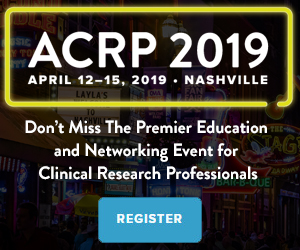A spate of late 2018 U.S. Food and Drug Administration guidances on gene therapy has significantly changed the 2019 clinical trial landscape, warns Meagan Vaughn, PhD, RAC, a research scientist with Rho. Savvy practitioners should spend some time getting up to speed on the topic, she advises. At Rho, Vaughn provides project leadership for full-service clinical research studies, including recent first-in-human gene therapy studies.
In addition to complex pricing and reimbursement issues impacting product development, Vaughn says site activations are going to require more and more oversight, in part because of additional reporting requirements for some gene therapy trials. “Managing the investigational product has additional requirements and layers of complexity,” she notes.
Given the fact that gene therapy clinical trials are something of a new frontier, Vaughn says it should not be a surprise to find “a very wide variability in level of experience” among practitioners. “It can be a major stumbling block for startups if they haven’t [already learned] to navigate the institutional biosafety committee (IBC) process…and some sites don’t even know if they have an IBC, or who they should contact,” she explains. “The questions that get asked in the applications for IBC [approval] can be extremely technical, and if you don’t have a laboratory background, it might be really hard to answer them.”
Understanding Regulatory Guidance for Gene Therapy Development
Join Meagan Vaughn from Rho at ACRP 2019 this April for a comprehensive review of FDA’s six new or revised guidance documents related to the development of gene therapy products. Take home a clear understanding of the implications of these guidances for clinical development of new gene therapy products.
To smooth the process, it’s critical to educate sponsors about the kind of material and information sites will need up front in order to most efficiently and thoroughly answer those difficult questions. For example, sites may be expected to have a map of where the agent is going to be stored, plans for how it is going to be transferred, and awareness of what kind of biohazard safety labeling is required on the refrigeration unit.
“You’re not only protecting the patient’s safety through the typical mechanism of the [institutional review board], but you’re also protecting the staff, because you have to make sure there are appropriate measures in place to prevent inadvertent exposure to staff members,” Vaughn says. “You really don’t want to be exposing people to something that has potential long-term effects, because it is modifying or supplying additional genetic material.”
Author: Michael Causey




